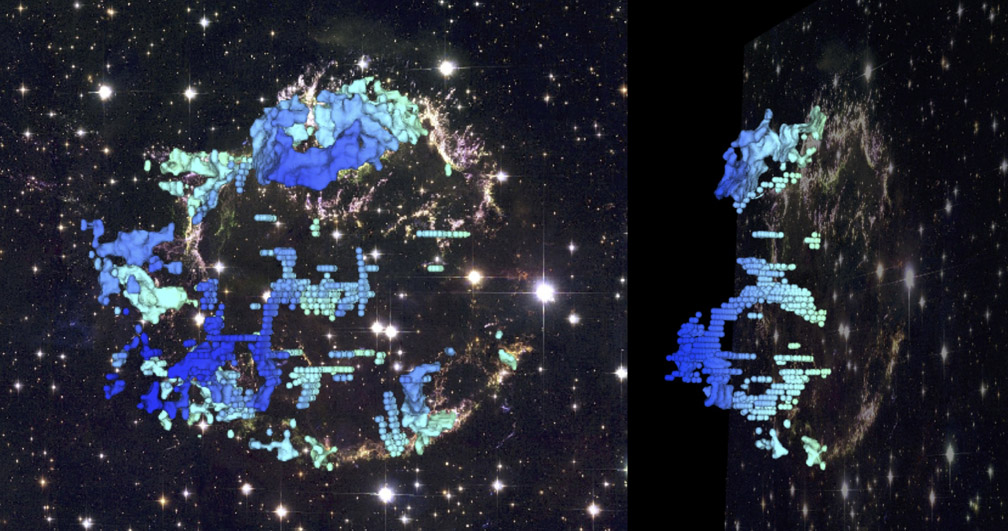Image List
-

A photograph of Cas A from NASA's Chandra X-ray Observatory reveals the supernova remnant's complex structure. In this representative-color image low-energy X-rays are red, medium-energy ones are green, and the highest-energy X-rays detected by Chandra are colored blue.
NASA/CXC/SAO -

This composite image shows two perspectives of a three-dimensional reconstruction of the Cassiopeia A supernova remnant. This new 3-D map provides the first detailed look at the distribution of stellar debris following a supernova explosion. Such 3-D reconstructions encode important information for astronomers about how massive stars actually explode. The blue-to-red colors correspond to the varying speed of the emitting gas along our line of sight. The background is a Hubble Space Telescope composite image of the supernova remnant.
D. Milisavljevic (CfA) & R. Fesen (Dartmouth). Background image: NASA, ESA, and the Hubble Heritage Team.